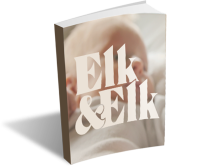Slips, Trips, and Falls and Your Baby
Just because an infant got through birth and its first few days of life without a brain injury, that doesn’t mean they are in the clear. Slips and falls are hazards that can leave permanent damage. Brain size increases significantly in the first four years as does neural development. Bone ossification in the skull plays a role in susceptibility to injury as well.
Get A 100% Free CASE EvaluationHeight Is Not a Baby’s Best Friend
An International Journal of Developmental Neuroscience study, published in 2011, found that infants admitted for fall injuries were more likely to fall from low heights. Soft tissue injuries to the face and scalp and skull fractures were observed in infants more than in toddlers in low/intermediate height falls. Infants were found at more risk of multiple skull fractures in high height falls.
Falling down stairs is a risk factor. Skull fractures were more common in the study for infants than toddlers. The correlation between external trauma and the intracranial injury did not always exist. In fact, 57 percent of children with skull fractures didn’t have any outside bruising. A high percentage with a primary intracranial injury also did not have any fractures to the skull.
The risk of slips, trips, and falls includes the potential for brain injury even if there doesn’t seem to be much external trauma. It’s also difficult to tell by a child’s mental state. For those admitted to hospitals in the study, toddlers were more likely to show mental changes than an infant.
Keeping a Child Safe
Stairs and even baths present dangers to children. According to the Consumer Product Safety Commission, children under five years old account for nearly 30 percent of bathtub and shower falls in the U.S. each year, although they make up just 8.5 percent of the population, based on emergency room visits. Half the injuries were to kids four years and younger, but two-year-olds were found to be most susceptible to harm. Of all the injuries, 81 percent were due to falls, trips, and slips. Other potential causes of injury include loose furniture, or if a TV falls on a child and causes a concussion, for example.
What to Do After a Fall
Babies can often seem fine after a fall. A bump on the head doesn’t always trigger an alarm in people. However, an impact hard enough to do this is also enough to cause a concussion. A youngster may not show signs of fatigue, dizziness, or nausea for hours, so a medical checkup is a good idea. A visit to the emergency room is in order if the child vomits repeatedly or has seizures.
Even with a mild concussion, the brain needs time to heal. This is best done with rest and by limiting exposure to activity, light, and noise. However, prevention is an effective way to avoid the consequences of falling in a bathtub or down the stairs or having any objects fall on a baby’s head and cause injury that can have short- and long-term effects.


